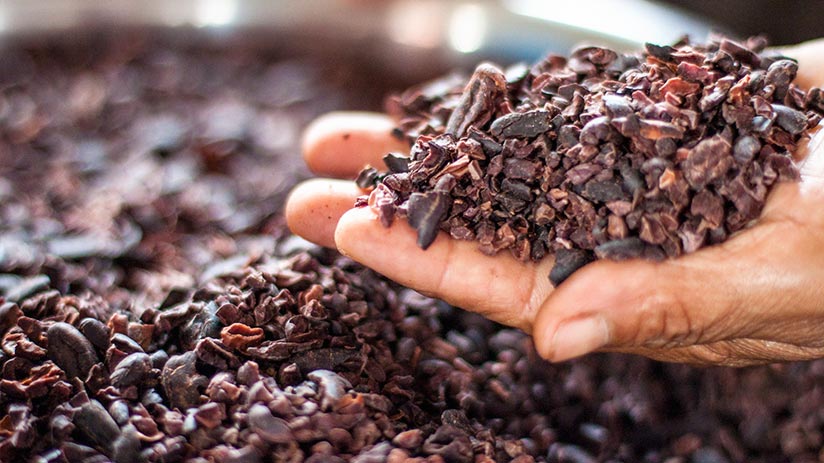Nowadays, many scholars still study why foods cultivated in the Andean range have great energetic qualities. Peru, as a mountain range country, has a great variety of these foods throughout all its Andean area. Therefore, it’s no surprise when we say that these Peruvian superfoods are the result of having grown in the world’s climate synthesis country; Peru (It has 28 of 32 climatic zones of the world!) For this reason, many nutritionists say that if they had to save a country, to be preserved after a world catastrophe, this country would be Peru.
That is why, together with the travel experts at Machu Travel Peru, we have proposed to list those Peruvian superfoods that you cannot stop trying on your next trip, besides including the new superfood jewels discovered in not much time. From Quinoa to Chia, you can find these superfoods in any store or Peruvian restaurant. Check out some of these amazing foods.
Peruvian superfoods you must try while in the Andean country
Traditional Peruvian superfoods
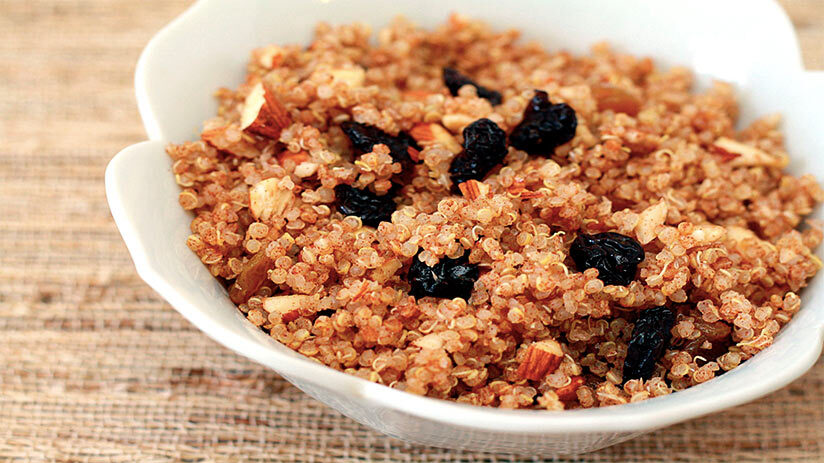
The local people have been using these Peruvian Superfoods since Inca’s times when the Andean culture cultivated Quinoa, Kiwicha, potatoes, and many kinds of corn in fertile lands that they called “Sacred” (Therefore the name, Sacred Valley, located close to Cusco) When the Peruvian geography presented steep slopes, they adapted the uneven peaks on Andean platforms. Maybe, the foods cultivated there, imitated the harsh and rugged climate and land where they grew, became tough and strong to withstand these climatic features. In any case, here you have a list of the most representative Peruvian superfoods, many of them used in the dishes’ preparation of Peruvian gastronomy in the most exclusive Novo Andean restaurants in the world.
1. Quinoa
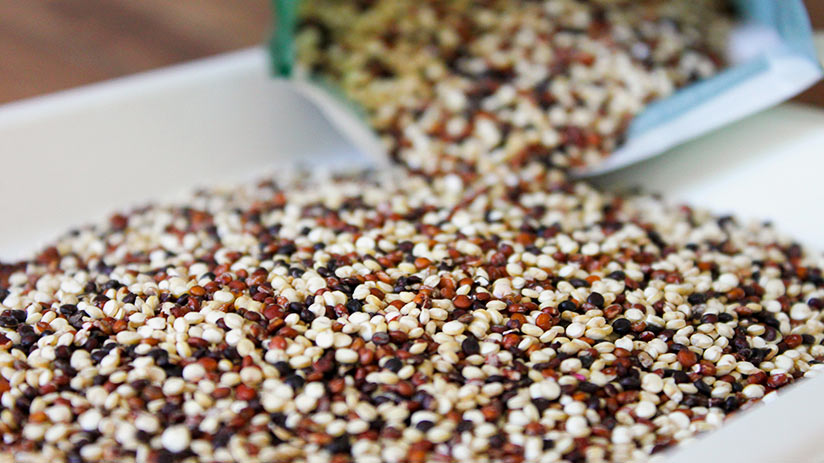
| Health benefits | Quinoa prevents heart disease, high cholesterol levels, helps digestion, and is good for people with Celiac disease. |
| Nutrients | High levels of protein, fiber, magnesium, iron, lysine, manganese, vitamin B12 and E, zinc, copper, and potassium. |
| In which recipes can you find it? | Quinoa porridge, Quinoa stew with cheese. include them in your soups, cereals, bread, and other baked goods. |
Quinoa was cultivated in the Andes for thousands and thousands of years and was the preferred food of the ancient Andean warriors who needed energy. This Peruvian superfood is native to the Lake Titicaca basin, located in the highlands of Peru. Ancient settlers have consumed quinoa for more than 4,000 years. Before human consumption, it was used to feed livestock for more than 7,000 years. Nowadays, this superfood grows in the Andean regions of Peru and is boiled like a grain. Even, the so-called “gold of the Incas” is the preferred food of North America, Asia, and Europe, to name a few countries.
Thanks to its high levels of protein, it qualifies as one of the best Peruvian superfoods. Even Quinoa seeds are gluten-free, making them a popular choice for people with celiac disease. Many Peruvian desserts include quinoa as one of their main ingredients, not to mention its amazing and delicious taste. On your next trip to Peru, you will find different types of Quinoa, all wonderful for your health.
2. Kiwicha (Amaranto)
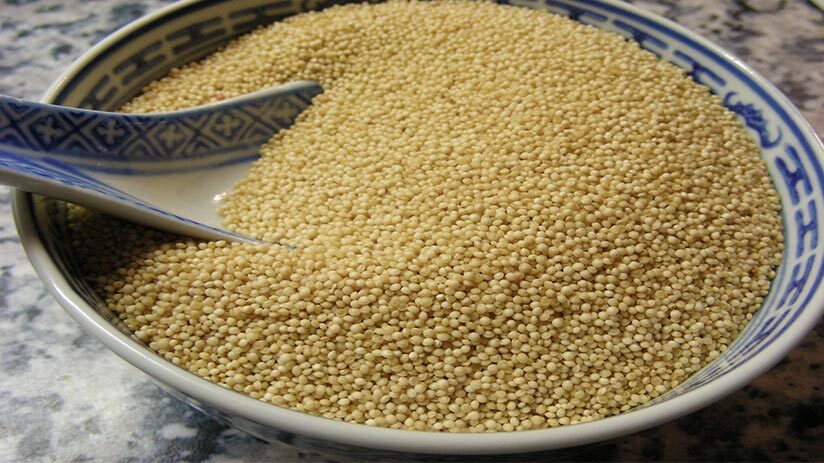
| Health benefits | Kiwicha can greatly help digestive and cardiovascular health. Its bioactive properties also help reduce triglyceride and cholesterol levels. Contributes to healthy bone and muscle development. In addition, it promotes mental development in the little ones. |
| Nutrients | High levels of calcium, dietary fiber, and even vitamins B9 and B6. It has a content of phosphorus, zinc, potassium, iron, and even Vitamin E. |
| In which recipes can you find it? | Powder, flakes, include them in your soups, cereals, bread, and other baked goods. It can also be used for breading or sprinkling in salads and even whole. |
Quinoa is not the only Peruvian superfood in seed form. Kiwicha, also known as amaranth (Amaranthus Caudatus), is another Peruvian favorite and is very similar to quinoa, but smaller. Some even choose to call it “mini quinoa”, it has incredibly nutrient-dense and was cultivated in Peru for over 4000 years. This ancient seed was used for certain ceremonial rituals by the Andean peoples and the ancient Incas. Both its leaves, stems, and flowers are purple, gold and red. Therefore, this plant is also often known as the plant that bleeds love. It is believed to carry this nickname for its bright red appearance, which is largely due to its high content of antioxidants such as betacyanins.
Today, Kiwicha is considered a gluten-free alternative for making bread and other delicacies. This impressive seed grows on a plant native to South America, and It was one first cultivated food in space by NASA (By its fast adaptability in zero-oxygen and sun rays environments). Kiwicha is sold in the form of seeds and powder. It is used in endless delicious recipes. Some very popular breakfasts are prepared with Kiwicha. You can find it in some Peruvian street food stalls in the morning.
3. Tarwi
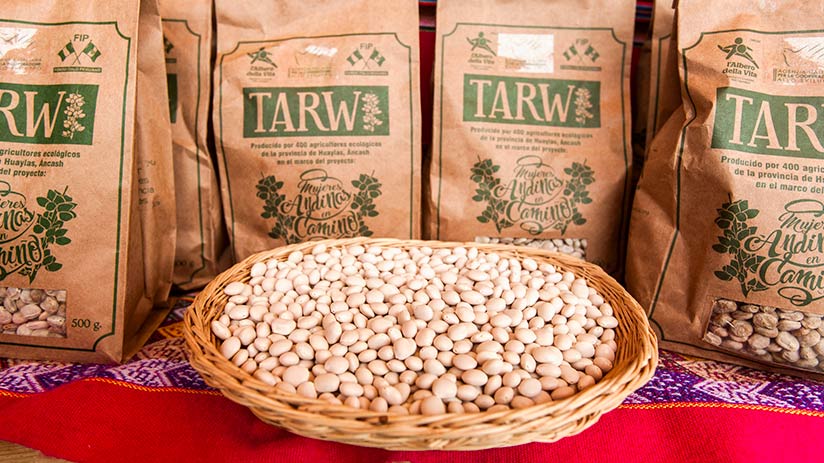
| Health benefits | It is known to help fight certain types of cancer. It even contributes to cardiovascular problems and diabetes. Furthermore, it is food that helps improve digestion, develop and improve muscle function and can contribute to weight loss. |
| Nutrients | Tarwi has high levels of protein, especially lysine, an essential amino acid. It also has omega 6 fatty acids and a little omega 3. It even has important minerals such as calcium, magnesium, and zinc, as well as vitamins of the B complex. |
| In which recipes can you find it? | It is traditionally served in stews, soups, salads, or also with Peruvian corn. We recommend trying Tarwi with Meatballs. |
Rich in protein and fiber, the nutritious Tarwi legume is another of Peru’s best-kept secrets. The Tarwi is known by the scientific name of Lupinus Mutabilis. While in other Andean regions it is also known as “Chocho”. Tarwi was cultivated long before the Incas. Between the years 500 to 100 BC, seeds were found in graves belonging to the Nazca culture. This legume is also represented in Tiahuanaco ceramics dating from 500 to 100 BC. At colonial and republican times, the Tarwi lost much of its consumption. But despite that, many communities maintained the genetics of these wonderful crops to this day.
Also, Tarwi is considered the favorite food of many vegans and vegetarians due to its large amount of proteins and healthy fats. This plant has an edible seed very similar in appearance to a bean, a bitter bean that requires constant rinsing to remove certain alkaloids before being used in different traditional Peruvian food belonging to the Andean culture. Undobetley, being able to enjoy Tarwi is a journey back in time.
4. Cacao
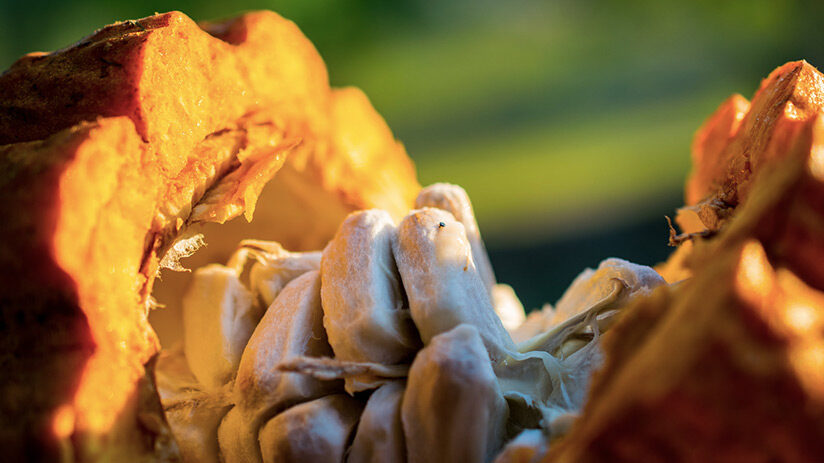
| Health benefits | It is known to have anti-inflammatory properties and to stimulate the immune system. It can even fight heart disease and even certain types of cancer. Likewise, it can also help fight anxiety and depression. It is an excellent ingredient to elevate your mood and increase your energy levels. |
| Nutrients | It has numerous essential minerals such as iron, calcium, sodium, magnesium, potassium, zinc, phosphorus, and copper. In addition, it has theobromine, caffeine, and antioxidant flavonoids. |
| In which recipes can you find it? | Raw cacao tastes quite bitter. Only with additives such as sugar, milk, and other flavorings does it gain its characteristic flavor. Cocoa is used both in chocolate bars and in a wide variety of desserts. Hot chocolate and tea made from cocoa shells are quite famous preparations. Some people looking to increase the benefits often sprinkle raw seeds over granola or mix the raw powder into their different shakes. |
The dry and fermented seeds of the Theobroma Cacao plant produce the Cacao beans. This, among other Peruvian superfoods so loved throughout the world, is native to the Peruvian Amazon basin and the vicinity of the Peruvian Andes. In addition, it also grows in Colombia and Ecuador naturally. Cacao is rich in lots of antioxidants, minerals, and vitamins, among other excellent characteristics. In fact, its scientific name, Theobroma, translates from Latin to Spanish as “food of the gods.” Its consumption helps protect the heart and is a natural mood enhancer, thanks to its Anandamide (responsible for feeling like happiness or euphoria) and it contains more calcium per cup than the same milk cow. Formerly, this food was used by native communities medicinally and spiritually. They used cacao to make sparkling full-bodied infusions mixed with spices, fruit juices, and even other medicinal plants.
Nowadays, many of the cacao processing techniques tend to eliminate the many benefits of this superfood. But fortunately, more and more producers decide to make use of raw cocoa and take advantage of its natural capacities. Certain tours in Peru offer the possibility of visiting the Chocomuseo, an incredible experience where you can learn how to make your homemade Peruvian chocolate bar.
5. Purple corn
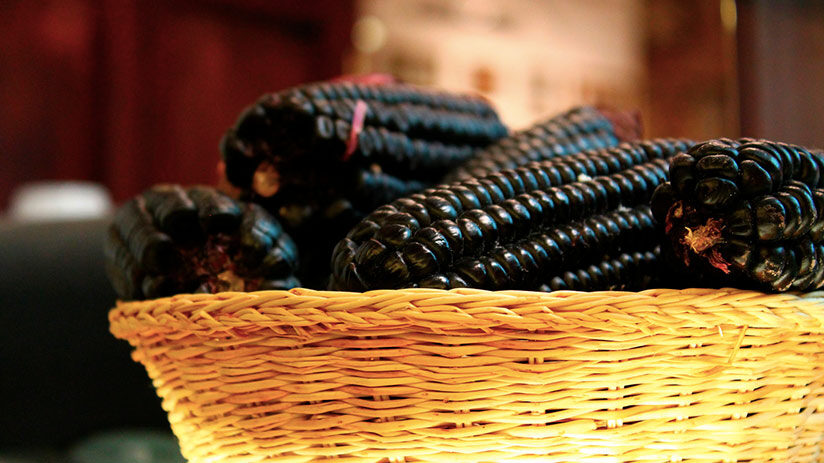
| Health benefits | It helps to prevent blindness, improve vision (due to lutein and zeaxanthin) promote good blood circulation, and slow down aging. Improves the immune system thanks to its antioxidants. Besides lowering cholesterol and blood pressure, stabilizing and protecting the capillarity of the arteries, and combating obesity and diabetes. |
| Nutrients | Phenolics and anthocyanins, one of them a powerful antioxidant. Fiber, lutein, zeaxanthin, and proteins. |
| In which recipes can you find it? | Purple corn usually is prepared in desserts like Purple porridge (Mazamora Morada), purple jelly, even in traditional Peruvian drinks, the most famous is purple chicha (Chicha Morada) |
If you know some about Peruvian Superfoods, even about Peruvian gastronomy, you must have listened to the Purple Corn and its famous preparations “Chicha Morada” and “Mazamorra Morada”, a traditional purple color Peruvian drink and porridge, consecutively. Purple Corn was consumed since 2500 years ago approx. by Mochica pre-Inca culture (the corn was represented in ceramics objects belonging to this culture). This colorful corn grows in the mountain range of Peru, Bolivia, Ecuador, and Colombia. All of them come from a single Peruvian ancestral branch called k’culli (Quechua word)
This particular corn is the unique purple from its outer part to its very center, and this is due to anthocyanin, a natural dye found in the grains as in the crown. Anthocyanin is a powerful phytochemical that acts as an antioxidant that has medicinal properties like lowering cholesterol and blood pressure, stabilizing and protecting the capillarity of the arteries, and combating obesity and diabetes. Its consumption is widespread among different Peruvian restaurants, cuisines. Even, many Peruvians consider it as one of the most popular Peruvian street foods, because you can find it on every street corner, sold like “Chicha Morada” drink. Therefore, not tasting this Peruvian Superfood on your trip to Peru, will be a big mistake.
6. Goldenberry (Aguaymanto)
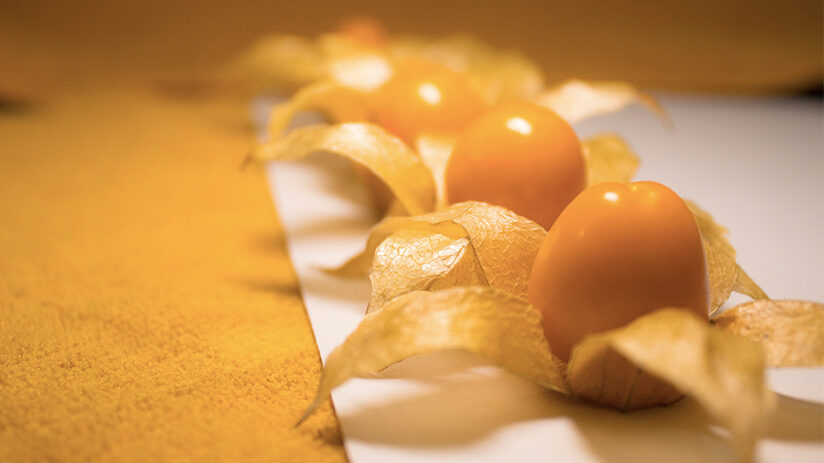
| Health benefits | Improve vision and immune system, strengthen bones, prevent hypertension, diabetes (control sugar levels), even lung cancer. Also, it is a good energizing. |
| Nutrients | Anti-inflammatory and antioxidant components. They are rich in bioactive compounds and nutrients such as calcium, vitamins A and C and B vitamins, iron, potassium, phosphorus, and soluble fiber. |
| In which recipes can you find it? | A typical Peruvian dessert-like Aguaymanto stew, Aguaymanto flan, or directly, as a fruit. |
The goldenberry or Aguaymanto (Peruvian local name) is consumed as a fruit. However, this yellow berry has more similarities with vegetables like tomatoes or potatoes. It is known that it was consumed since Inca times, therefore it was known as “Inca Berry”. But How is the goldenberry? Well, these are round fruits with a yellow softshell (to protect against insects), its measure is not more than 3 centimeters and grow from Physalis Peruviana plant, a kind of Peruvian belladonna. Acid and sweet flavors are combined in the consumer’s palate, therefore these Peruvian Superfoods can be served in sweet dishes, such as salads, even savory dishes.
The Uchuva (yes, another name given in other South American countries) growth with natural conditions in Peru, Colombia, Ecuador, Venezuela, Bolivia, Chile, and Argentina, between 1800 and 3600 m.a.s.l. These goldenberries are rich in bioactive compounds, nutrients, and vitamins, despite not having many calories. Therefore, these are good for improving vision, strengthening bones, preventing hypertension, diabetes, even lung cancer. We highly recommend you taste them in desserts or directly. These will fascinate you.
7. Custard apple (Chirimoya)
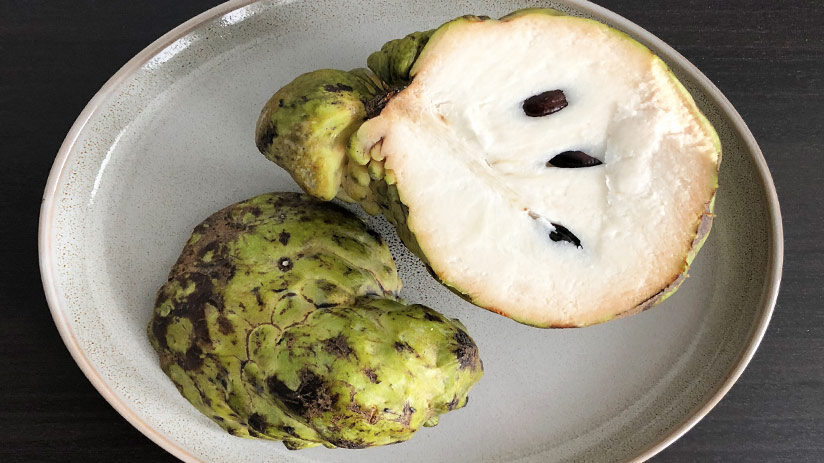
| Health benefits | Combat cancer, malaria, indigestion, improve vision, immunity, even human parasites. |
| Nutrients | High content of sugars, proteins, vitamins; B1, B2, B6, calcium, iron, phosphorus, and other nutrients. |
| In which recipes can you find it? | Chirimoya ice cream, Chirimoya porridge, Chirimoya drink or eat it directly! |
It was considered the most pleasant fruit ever consumed by man, according to Mark Twain’s notes. The Chirimoya (Word coming from Quechua that means cold seed) is native to Peru’s north tropical zones, where it was cultivated since 200 A.C. Of course, results of research carried out in Central America, as the second zone of origin, are lacking. This Peruvian food is a fruit of a tree or low evergreen shrub called Annona Cherimola. Black seeds wrapped in white flesh, all of it wrapped in a thick green shell with cell figures on its surface is the first impression of this fruit, but tasting it, is another world and yes, Mark Twain was always right. This fruit is matchless.
These Peruvian Superfoods are rich in vitamins B, B6, C, and antioxidants. Consequently, these fruits help to combat cancer, malaria, indigestion, improve vision, immunity, even human parasites. It tastes like a unique sweet creamy substance, it is impossible to describe, without a doubt, you have to prove it on your next tour to Peru.
8. Lucuma
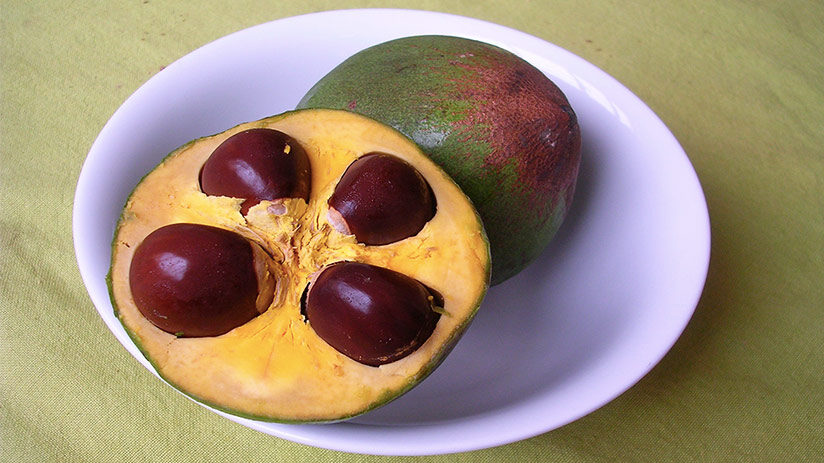
| Health benefits | Lucuma is excellent for people who lack trace elements and is ideal for those looking to keep their teeth and bones healthy and strong. Also, it possesses several anti-inflammatory properties, which help to aid with pain control, wound healing, and the prevention of cardiovascular accidents and skin aging (glowing and moisturized skin) |
| Nutrients | 14 essential trace elements, including sodium, potassium, magnesium, and calcium. High in beta-carotene, iron, zinc, vitamin B3 and proteins. |
| In which recipes can you find it? | Lucuma ice cream, Lucuma porridge, Lucuma Sour drink inter alia. And you can eat it directly! |
If you see the first time Lucuma fruit, you could think that this is avocado. Of green husk, the Lucuma was one of the favorite fruits of the Incas, among Goldenberries and Chirimoya, and grew of a perennial tree (of the same name) with a straight and cylindrical stem. Of course, once Lucuma is split in two, one can see its interior, semi-dry orange pulp that tastes like a mixture of caramel and banana. Like other Peruvian Superfoods, the Lucuma is an ancient inhabitant of the Incas country, it was cultivated in the Andean valleys of Peru between 8600 and 5600 B.C. (according to seeds found in “Cueva del Guitarrero” archaeological site, in the central Peruvian highlands)
This fruit has essential trace elements, including sodium, potassium, magnesium, and calcium. Also, Lucuma has a high content of beta-carotene, iron, zinc, vitamin B3, and protein. Its pleasant flavor makes it indispensable in the most traditional Peruvian desserts. For this reason, Lucuma is another Peruvian Superfood that you should not stop tasting on your Peru trip.
9. Olluco
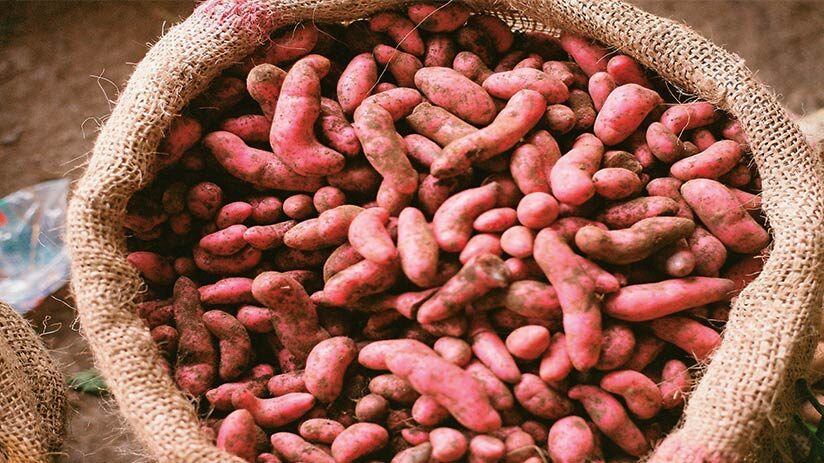
| Health benefits | Its betacyanin content can help fight cancer and other cardiovascular diseases. While its levels of fiber and carbohydrates help natural digestion and satisfy you. And its moderate levels of essential amino acids provide strength and energy. |
| Nutrients | The tuber is an incredible source of fiber, vitamin C, carbohydrates, and a large amount of protein. It is also a complete protein food as it contains all nine essential amino acids. It also has high levels of antioxidants and betacyanins. |
| In which recipes can you find it? | Olluco is generally used in soups and stews. It is traditionally sliced and is very popular in salads. It is also often included in pickles and other hot sauces. One of the best-known preparations is the Olluco with Meat. |
The Olluco (also known as the Ullucus Tuberosus) is a type of flowering plant that is used mainly as a kind of tuber (although many times its leaves are also used as they are rich in nutrients). This superfood was consumed by the indigenous peoples of the Andean highlands for thousands of years. Also, these have a similar appearance to the potato but are completely different species from a botanical point of view. Its texture is much crunchier and its flavor is also very different. In recent years, they have gained some popularity in Peruvian cuisine, including it in many dishes from the Andean lands.
It is commonly used in stews and soups, and its spinach-like leaves are also used for fresh and cooked salads. The Olluco is rich in proteins, fiber, calcium, and vitamins A and C among other benefits. An Olluco broth can be highly beneficial for digestion, in addition to providing good nutritional value to our meals. Today, many renowned chefs decide to reinvent fusion food dishes and add Peruvian superfoods such as Olluco.
10. Coca leaf
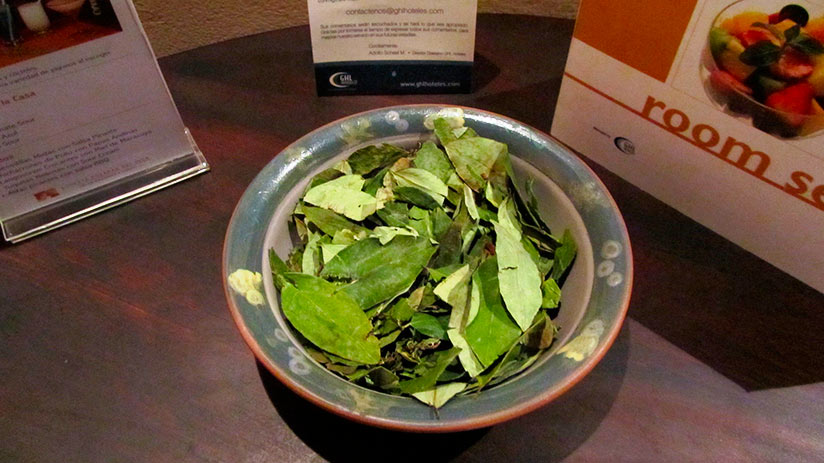
| Health benefits | Coca leaves have numerous beneficial health properties. It has diuretic properties, fights anemia, and regulates metabolism. It also helps improve liver function and lowers triglycerides and cholesterol. Furthermore, it is also excellent for increasing physical endurance. But in Peru, it is often used to combat altitude sickness. |
| Nutrients | Coca leaves are packed with vitamins E, C, B6, B2, B1, and A. Its leaves are also rich in minerals such as magnesium, phosphorus, and calcium. It is also a great source of fiber and protein. |
| In which recipes can you find it? | Traditionally, coca leaves are chewed or drunk in an infusion. There are also sweets, powders, and even flours made from coca. It has a slightly bitter and earthy flavor, with some sweet hues. It is spicy and pleasant at the same time. |
The coca leaf (also scientifically known as Erythroxylum coca) is not only a Peruvian superfood, it is also an important part of the Andean culture. It is one of the most iconic and emblematic plants of the Andean lands. This is cultivated from the Amazon basin to the Peruvian Andes for more than, 8000 years. Although it also grows in Colombia, Bolivia, Ecuador, and Argentina. When traveling to Cusco or Machu Picchu, you will surely have your first contact with this magical plant. Traditionally, the ancient Peruvian chewed this leaf to avoid fatigue and alleviate hunger. Besides being used for both medicinal and spiritual purposes.
Unfortunately, Coca is also used to produce the drug cocaine, as a result, its cultivation has become the controversial focus of numerous anti-drug policies. However, its natural and unrefined consumption has to stop being related to the negative effects of cocaine. The coca leaf is full of minerals, essential vitamins, and alkaloids that help to cope with the great heights of Peru. Coca stimulates the immune system, increasing your body’s ability to metabolize negative compounds in your body. If you plan to go for a hike, a coca tea for altitude sickness can help you feel more energetic and vital.
11. Panela (Chancaca)
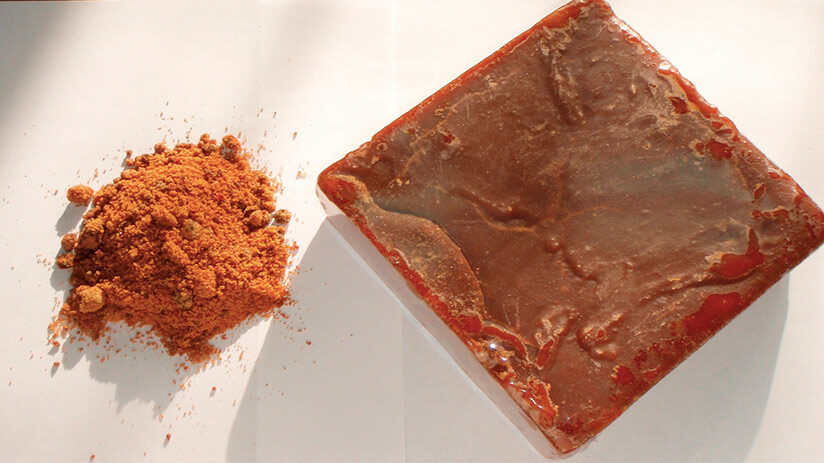
| Health benefits | It is an excellent option with a low glycemic index since it has immunological benefits and high levels of micronutrients. It is excellent for preventing anemia and fighting urinary and respiratory diseases. It has a fairly sweet flavor but depending on the region the flavor can vary. You can feel some notes of caramel, fruits, flowers, burnt sugar, and even molasses. |
| Nutrients | Panela contains a large amount of magnesium, iron, and calcium. It also has amounts of VITAMIN A, B, C, D, and E. It also has some amounts of potassium, iron, zinc, manganese, and other minerals. |
| In which recipes can you find it? | In Peru, panela is used to make Chancaca. This is a warm, sweet preparation made with cinnamon and orange peel. It is used in a wide variety of Peruvian desserts. But in other parts of the world, it may be one of the best alternatives to sugar. |
Chancaca, also known as Panela, is one of the best alternatives to refined sugar. Although sugar is increasingly undeniably associated with the obesity epidemic in the world, Panela is a much healthier alternative to sugar. This is a solidified form of pure cane sugar, this is boiled and evaporated from the sugar cane plant, also known as Saccharum Officinarum. Being unrefined, Chancaca is full of vitamins and minerals such as calcium, copper, selenium, and iron. Although indeed, it is still essentially a type of sugar, as it is not refined it has a greater amount of micronutrients.
If used in moderation, Chancaca can be a great substitute for refined sugar or existing corn syrup. Despite being considered a Peruvian superfood, as we mentioned, its consumption has to be moderate and conscientious. It may be a bit difficult to get in markets in the United States or elsewhere, but within the Andean lands, this is undoubtedly an easy product to get. The great biodiversity in Peru is reflected in its ingredients and superfoods.
New Peruvian superfoods jewels
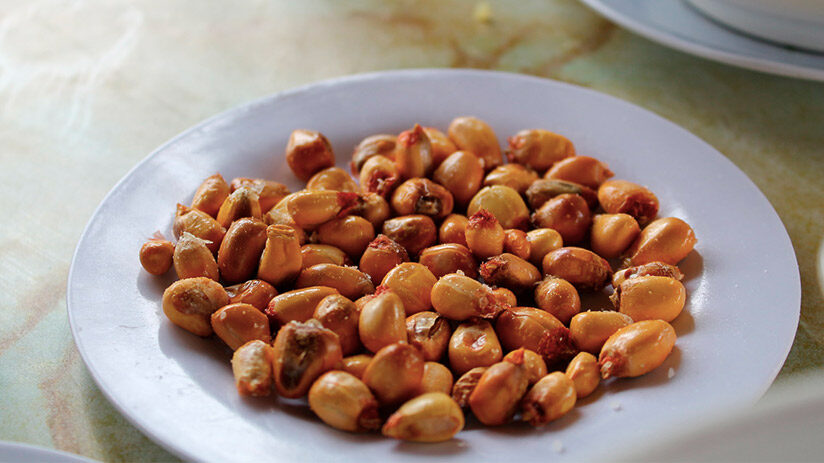
At first glance, the mountain range of South America shouldn’t be fertile ground for any food or vegetables that dares to grow there; rugged slopes, rocky terrain, ice-covered foothills. However, nature is unpredictable and keeps its best secrets to be shown at the least expected moment. This is the case of these Peruvian Superfoods that were discovered not long ago in the Peruvian Andean and show a high level of nutrients, proteins, and vitamins. Cataloged as a “Nature wonders”, following you will find these new best Peruvian Superfoods, to be learned, to take advantage of them.
12. Sacha Inchi
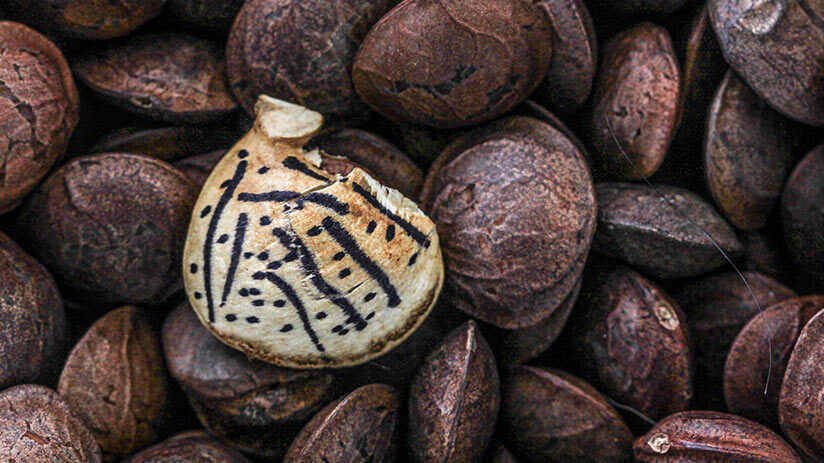
| Health benefits | The consumption of this seed helps reduce cholesterol and triglyceride levels. Thanks to its Omega 3 content, it can improve cardiovascular health, lower cholesterol, stimulate brain function and protect against certain types of cancer. |
| Nutrients | Sacha Inchi has very high levels of omega 3 fatty acids and healthy proteins. In addition, they are an excellent source of antioxidants, vitamins A and E, tryptophan, zinc, calcium, potassium, and fiber. |
| In which recipes can you find it? | People in Peru use both roasted seeds and their cooked leaves. There are even oils extracted from this Peruvian superfood. The raw seeds of Sacha Inchi are not edible at all. Usually, the product is sold in sealed packages with the seeds already roasted. |
As with most Peruvian superfoods, Sacha Inchi (scientifically known as Plukenetia Volubilis), or “Maní Inca” was one of the favorite foods of the majestic Incas (in some archaeological excavations of tombs, scientists found representations of this plant in numerous vessels) who consumed them centuries before North American health advocates were aware of it. This plant usually flourishes in somewhat acidic and alluvial soils and is indigenous to the high-altitude rainforest on the eastern slopes of the Peruvian Andes. Its fruit is green and has a shape that resembles a star. Its pods have oval seeds very similar to almonds.
This seed (very similar to walnut) is rich in omega fatty acids, protein, fiber and also contains vitamins A and E. Being able to eat these roasted seeds or use unrefined virgin Sacha Inchi oil has numerous health advantages. It is beneficial for the eyes, hair, skin and reduces cholesterol significantly. The seed and its oil have direct benefits for the skin, hair, and eyes and help reduce cholesterol levels. Some alternative Peruvian ceviche recipes even include this iconic superfood.
13. Camu Camu
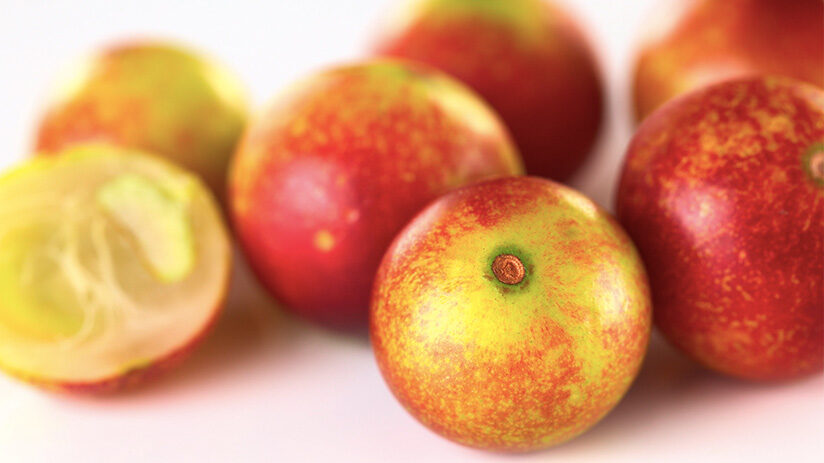
| Health benefits | Its high levels of vitamin C help improve the immune system. It has anti-aging effects. And its antioxidants can prevent carcinogens from binding to DNA. It is also used in traditional medicine as an excellent antiviral. It is used to treat cold, flu, and herpes symptoms. |
| Nutrients | Camu Camu berry is an unparalleled natural source of vitamin C. It is known to have 30 to 50 times more vitamin C per ounce than oranges. It is also an incredible source of antioxidants, iron, potassium, phosphorous, riboflavin, and niacin. |
| In which recipes can you find it? | In Peru, Camu Camu pulp is used to add flavor to artisan ice creams and other smoothies. Outside of Brazil and Peru, Camu Camu can be found in pulp, powder, and even pill extract. |
Superfoods are considered as such due to their richness in various beneficial nutrients for health. A single serving of these is capable of supplementing numerous other known foods. The Camu Camu berry is another of the Peruvian superfoods that you cannot miss on your next trip. This small berry, of cherry-sized fruit with red and purple color with a tangy taste, is rich in vitamin C and is also considered a natural antidepressant. A single serving of Camu Camu is estimated to have 50 times more vitamin C than can be found in an orange.
The reddish berry grows in the lowland’s rainforest swampy regions of the Amazon in Brazil and Peru. A curious fact is how this plant can survive up to 5 months underwater, therefore many people harvest Camu Camu by canoe. On the other hand, the fruit decomposes very quickly outdoors, so it is usually rare to see it outside these regions. For this reason, you can only have it in processed powder form in most stores and places outside of Peru. If you want to taste it fresh, better take a trip to the source zone and enjoy the exclusive tourism in Peru.
14. Maca
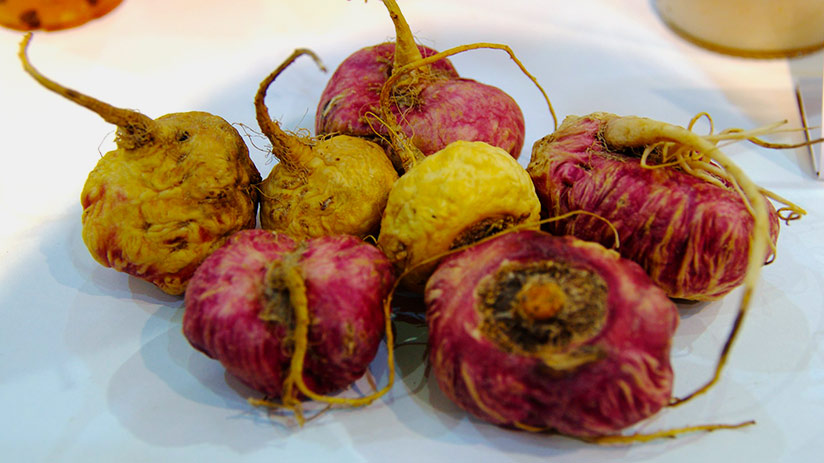
| Health benefits | Maca root is an adaptogen, which means that it is a substance that enhances resistance and reduces the state of alarm. This makes depletion more difficult to produce. Maca increases the body’s resistance to certain diseases. And it also has many medicinal properties, as it increases fertility and is an excellent natural aphrodisiac. Maca works in a way that balances the endocrine system, relieving fatigue, balancing mood, and increasing energy. |
| Nutrients | Maca is very rich in fiber, protein, and carbohydrates. Maca is conveniently low in sodium and fat. In addition, it is rich in calcium and potassium. |
| In which recipes can you find it? | In Peru, Maca is used to make both infusions and bread, porridges, and other cooked foods. It is used to flavor meat and potatoes. Although outside of Peru, Maca is available in liquid, powder, or pill form. It is an excellent alternative to mix with smoothies. When cooked, Maca gains an aroma similar to caramel. |
Maca root is a tuber very similar in appearance to the average potato. Maca (scientifically known as Lepidium Meyenii) is one of the Peruvian superfoods whose popularity has grown in recent years in Peru and around the world, especially in the United States and Canada. Studies indicate that Maca was an important part of the diet of the expanding Inca Empire. Also, stories are known of Inca warriors who were fed heavy diets of these Peruvian Superfoods to prepare them for battle.
This root grows at high altitudes, between 2,000 and 4,000 feet tall and comes in many different varieties that are distinguished by the color of the root of each one. Maca root belongs to the same family as broccoli and radish. It is considered one of the healthiest natural ingredients in the world and is also known as the equivalent of Peruvian ginseng. Not because there is some relationship between the plants, but because of the effects it causes; improved testosterone production, improved libido, cardiovascular disease prevention, energizer, and much more. Today, Maca is known to be a natural energizer par excellence and is consumed in many parts of South America. If you are looking for tips for healthy travel, we recommend you try the delicious Peruvian Maca. A Maca breakfast can be even a great alternative to a delicious Peruvian coffee.
15. Yacon
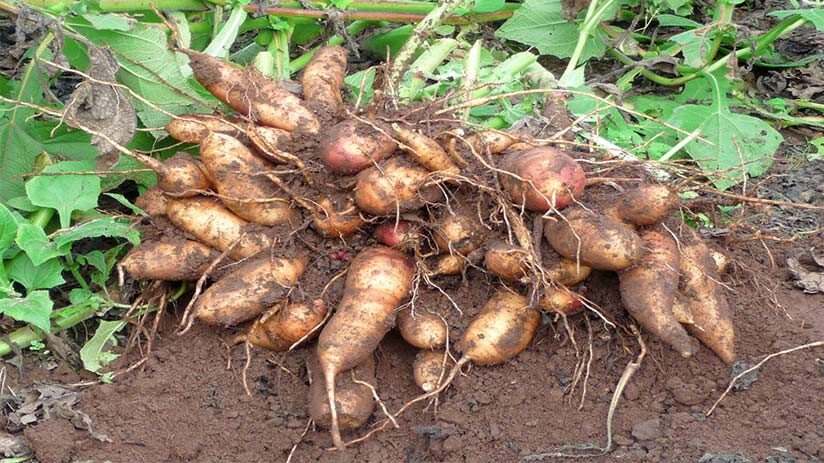
| Health benefits | Prevents aging, helps patients with cholesterol, prevent colon cancer, helps lose weight, stimulates hemoglobin, and improves the bone system. Yacon is useful as a natural laxative and contains fructooligosaccharides that reduce glucose quantity in the blood and liver, preventing Diabetes. |
| Nutrients | Yacon provides a good amount of minerals (iron, potassium, magnesium, sodium, and calcium), fiber, and vitamins (A, C, E, and B complex, especially B1, B2, and B3), some of which have antioxidant properties. |
| In which recipes can you find it? | Yacon Juices, Syrup Yacon, Yacon salad, Carrot, Ginger, and Yacon smoothie, inter alia. |
Among Peruvian Superfoods consumed in the Incas times, the Yacon is the most exclusive food eaten by them. Why? Because they consumed Yacon on holidays and special occasions (there is a record that Moche pre-Inca culture and after, Incas culture, enjoy this enjoyed this food) The Andean tuber grows in the north and center mountains range of Peru and surrounding lands. Yacon tuber or Smallanthus Sonchifolius (scientific name) is similar to potatoes or jicama, while the plant is more closely related to sunflowers.
The ancient Peruvians consumed them as a vegetable and syrup to take advantage of the benefits concentrated in its roots. The Yacon is poor in calories but rich in minerals, vitamins, and carbohydrates. Its syrup is sweet and helps to prevent obesity with the feeling of satiety that provokes when tasting it. Also, Yacon is useful as a natural laxative and contains fructooligosaccharides that reduce glucose quantity in the blood and liver, preventing Diabetes. Without a doubt, Yacon is the new jewel Peruvian Superfood that you do not have to stop tasting.
“YOU DON’T HAVE TO EAT LESS, YOU JUST HAVE TO EAT RIGHT”
As you can see, Peru is home to a wide variety of superfoods, many of them native to and originating in the country. It cannot be denied that the great cuisine characteristic of Peru is linked to numerous healthy ingredients. We hope together with the experts from Machu Travel Peru to have clarified some of the most important Peruvian superfoods. This is just a glimpse of everything you can find in Peru. You can try each of these foods on your next trip to the Andean country. If you want to know about Peruvian gastronomy, you can consult for free with our qualified advisers.
